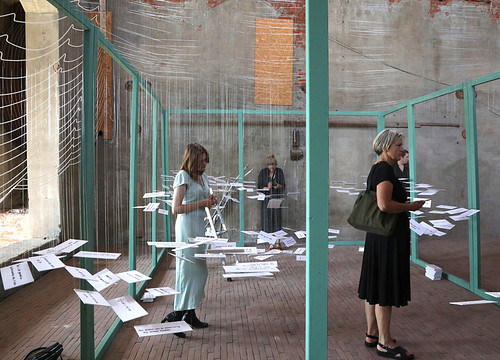- Level
- master
- Form
- full-time
- Duration
- 2 years
- Language
- English
- Locations
- Groningen
- Degree
- Master of Arts
- Credits
- 120 ECTS
- Startmonths
- Start: September
Connect, Collaborate, Engage: iRAP — Creating Change Through Socially Engaged and Participatory Art

Connect, Collaborate, Engage: iRAP — Creating Change Through Socially Engaged and Participatory Art
This programme aims to ignite dialogue, encourage collaboration, and inspire meaningful societal change. You will work closely with experienced artists, participate within diverse communities, and reimagine what art can achieve as a shared, inclusive process in today’s world.
In previous years, our students have undertaken socially engaged projects, working as artists embedded in rural communities in Friesland, scenographers in Haarlem’s churches, and filmmakers within Groningen’s LGBTQI+ circles. They have taken part as painters in community centers, graphic designers in retirement homes, and performers in nightlife settings across Rome and Berlin. Notable experiences also include creating art within refugee shelters, acting as activist educators on climate change, and collaborating with the Syrian diaspora across Europe.
These initiatives address urgent concerns such as social and political inequality, ecological crises, and the impacts of consumer culture and the fashion industry. The projects reflect the programme's commitment to tackling contemporary issues both regionally and globally.


In the first year of the iRAP programme, you embark on a journey to immerse yourself in foundational aspects of socially engaged and participatory art practices, creating art that challenges conventions and fosters meaningful shared experiences. This initial year emphasises your creative expression as a means to generate dialogue and connection, with a focus on how your practice can instigate change within specific contexts and communities.
Through guided experimentation, you will explore embedded, situated practices that challenge traditional narratives. This year’s work encourages you to embrace participation and open-ended processes, recognising that the audience may be anyone—from those directly involved in the work to individuals who shape it through dialogue and interaction. You will consider your audience’s responses to your work, how they might interpret and contribute to it, and how art can create a shared space for open accessibility and diverse perspectives.
Central to this journey is the focus on connecting with others through art. Throughout the year, you will design participatory experiences that invite the audience to take an active role. These projects are inherently collaborative, valuing the process over the result, and fostering a shared sense of agency. You will develop the skills to cultivate shared narratives, understanding that each participant’s interpretation is integral to the art itself.
Additionally, the programme underscores the importance of resilience and adaptability, reminding you that change is a vital part of the creative process. You will be encouraged to experiment with your artistic approach while considering broader social contexts. This includes addressing real-world challenges and translating your creative work into impactful community interventions.
Year 1 provides a supportive environment where you can boldly explore, working closely with communities to understand their stories, needs, and aspirations. By the end of this year, you will have a solid foundation of skills, insights, and critical awareness, ready to launch into more refined practice in the second year.
In the second year, the focus shifts to developing your graduation project and thesis—a culmination of your learning, experimentation, and participatory practice. This capstone project highlights your understanding of socially engaged art and allows you to articulate your unique artistic vision. Through reflection, you will consider the social implications of your work, exploring how it connects to the programme’s broader themes of collaborative, socially driven art practices.
Your thesis will articulate your methodology, insights, and the impact you aim to achieve through your art. The emphasis is on open-ended interpretation, recognising that your audience’s responses are part of the artistic process. This year serves as a crucial stage for refining your approach, developing your narrative, and preparing to contribute meaningfully to the professional art world.
This programme is an invitation to connect, collaborate, and engage—an exploration of how art can serve as a participatory, shared practice that brings urgent social issues into focus, encouraging dialogue and fostering change. Through socially engaged and collaborative processes, you will learn to create art that is deeply intertwined with the world around it.
Curious about the courses you'll take each year? Check out the full overview here!
To enrol in this master's degree programme, submit an enrolment application through Studielink (studielink.nl). On the enrolment form, under the master's programme, select 'Master of Arts in Fine Art and Design' at Hanze and then either MADtech, Painting, iRAP or MAPs in step 4. You will receive by email a login link and details for the 'Hanze Apply' and details of the documents we require from you.
Answer the questions and upload the requested documents: Under "Entrance Minerva" you have to upload the portfolio and other requested documents. The application form and additional information can also be found in the Hanze Apply. Under "International students" you have to upload your passport/ID card, diploma, etc. After everything has been filled out and uploaded, click on the "submit application" button.
After we have received your application form and portfolio, the admissions committee will assess your application documents and decide whether to invite you for an interview. If you live abroad and cannot come to Groningen for this, we can conduct the interview by Microsoft Teams.